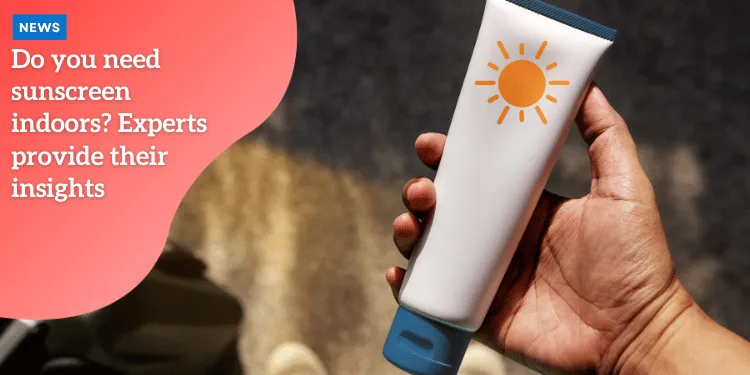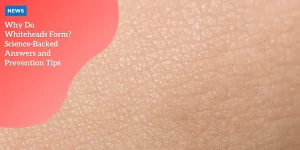Do you need sunscreen indoors? Experts provide their insights
By: Maicon Posted in: July 5, 2024 Last Update: February 7, 2025

Introduction: A Personal Journey into Sun Protection
Growing up, sunscreen was always a crucial part of my skincare routine, largely due to my mom’s relentless reminders.
Anúncios
As a child, I would groan at the idea of applying it every day, especially when I knew I wasn’t planning on spending hours in the sun.
The notion of sunscreen was closely tied to trips to the beach, vacations, and outdoor adventures.
It wasn’t until I grew older that I started understanding the importance of consistent sun protection, even when spending time indoors.
Anúncios
Now, even when I’m relaxing at home or working at my desk, I make it a point to apply sunscreen.
It’s a habit I’ve incorporated into my daily routine, one that I didn’t fully appreciate when I was younger.
To gain a deeper understanding of the need for sunscreen indoors, I reached out to four board-certified dermatologists for their professional insights on the topic.
Anúncios
The results were eye-opening and highlighted just how essential sunscreen is, regardless of where we spend our time.
Exploring Different Types of Light: UVA, UVB, and Blue Light
When we think about the dangers of the sun, we often focus on the intense rays we experience outdoors.
However, exposure to different types of light indoors can be just as harmful.
UVA Rays: Penetrative and Persistent
UVA rays, as Dr. Danilo Del Campo, founder of Chicago Skin Clinic, explains, are particularly insidious because they penetrate deep into the skin, causing long-term damage.
These rays are responsible for accelerating the aging process, contributing to wrinkles, fine lines, and age spots.
The damage from UVA rays is gradual, which makes it difficult to notice the effects until they’ve already taken a significant toll on the skin.
Dr. Robyn Gmyrek, of Unionderm in New York City, further emphasizes the importance of understanding the role UVA rays play in skin cancer development.
They are present year-round, regardless of the weather, and can even penetrate windows, making it crucial to protect your skin at all times, indoors and outdoors.
UVB Rays: Surface-Level Threats
These rays are responsible for causing sunburns, which are painful and can lead to increased risks of skin cancer.
Dr. Del Campo explains that UVB rays tend to vary in intensity depending on the time of day and the season.
During the peak hours of sunlight, usually between 10 a.m. and 4 p.m., UVB rays are strongest and pose a significant threat to skin health.
While it’s easy to think of UVB exposure as something that only happens outdoors, it’s still a risk indoors, particularly if you’re near windows or exposed to sunlight for prolonged periods.
Blue Light: The Digital Dilemma
In recent years, blue light has emerged as a growing concern for skin health.
Blue light is emitted not only by the sun but also by the screens of digital devices such as smartphones, computers, and televisions, as well as by LED lighting.
Dr. Del Campo points to recent studies that suggest prolonged exposure to blue light can lead to premature skin aging, hyperpigmentation, and other signs of oxidative stress.
These effects are linked to the disruption of the skin’s natural barrier and the production of free radicals, which accelerate the aging process.
While the risks associated with blue light exposure are still being studied, it’s clear that it’s a factor we should take seriously, especially considering how much time many of us spend in front of screens each day.
The Case for Indoor Sunscreen: Yes, It’s Necessary
Most people associate sunscreen use with outdoor activities, but the reality is that sunscreen is just as important indoors.
Dr. Del Campo stresses that both UVA and UVB rays can penetrate glass, which means that windows in your home or office don’t offer complete protection from harmful radiation.
Even if you’re not sitting directly in the sun, you could still be exposed to these rays while working, relaxing, or going about your daily routine.
Additionally, blue light exposure from digital devices has become a significant concern, particularly for individuals who spend long hours in front of screens.
As we continue to embrace more digital technology, the need for protection from blue light has grown more apparent.
Sunscreen that protects against both UV rays and blue light is a necessary tool in the fight against premature aging and other skin issues.
Sunscreen and Car Windows: A False Sense of Security
Many people assume that car windows block harmful UV rays, but this is not entirely accurate.
While car windows provide some level of protection against UVB rays, they do not block UVA rays effectively.
This means that you’re still vulnerable to the damaging effects of UVA exposure while driving.
Dr. Del Campo stresses the importance of wearing sunscreen during car rides, especially on long trips or during peak sunlight hours.
Even if you’re inside a car, your skin is still susceptible to the harmful effects of the sun.
Choosing the Right Sunscreen for Indoor Use
When selecting sunscreen for indoor use, it’s essential to choose a product that provides broad-spectrum protection, which shields the skin from both UVA and UVB rays.
Dr. Hadley King, a renowned dermatologist, recommends using a broad-spectrum sunscreen with SPF 30 or higher for daily protection.
However, the type of sunscreen you use may depend on your skin type, preferences, and specific needs.
Mineral Sunscreens: Physical Protection
Mineral sunscreens, which contain ingredients like zinc oxide and titanium dioxide, create a physical barrier on the skin’s surface to block UV radiation.
These sunscreens are particularly effective in shielding against UVA and UVB rays.
Dr. Gmyrek explains that mineral sunscreens are also beneficial for those with sensitive skin, as they are less likely to cause irritation or clog pores.
Additionally, they offer protection against blue light, especially if they contain iron oxide.
Chemical Sunscreens: Absorptive Defense
Chemical sunscreens work by absorbing UV radiation and converting it into heat, which is then released from the skin.
These sunscreens tend to have a lighter texture and are less visible on the skin than their mineral counterparts.
Dr. Del Campo notes that chemical sunscreens are an excellent option for people who prefer a more lightweight, non-greasy formula.
However, they may not provide the same level of protection against blue light as mineral sunscreens, so it’s important to choose a product that specifically targets this type of light.
Hybrid Sunscreens: Combining Benefits
Hybrid sunscreens, which combine both physical and chemical filters, offer the best of both worlds.
These products provide comprehensive protection against UV rays and can also help shield the skin from blue light.
For those who want a multi-functional sunscreen, hybrid options are an excellent choice.
Dr. King recommends using a broad-spectrum sunscreen with SPF 30 or higher to ensure complete protection throughout the day.
Applying Sunscreen Indoors: What You Need to Know
When applying sunscreen indoors, the key is to target the areas of the body that are most exposed to light.
Dr. Mary Stevenson, a prominent dermatologist, advises applying sunscreen to your face, neck, chest, and hands, as these areas are frequently exposed to sunlight or blue light from screens.
It’s also important to apply sunscreen liberally, using about a nickel-sized amount for your face and ensuring you cover all exposed areas.
Adjust the quantity based on how much skin is exposed to sunlight, as this will determine the level of protection needed.
Beyond Sunscreen: Additional Measures for Indoor Protection
While sunscreen is essential, there are other strategies you can use to protect your skin indoors.
Dr. Del Campo recommends simple measures such as positioning yourself away from direct sunlight or installing window films that block harmful UV rays.
UV-blocking window shades or curtains can also reduce the amount of radiation that enters your space, providing an extra layer of protection.
In addition, wearing UV-protective clothing and using screen protectors on digital devices can further reduce exposure to blue light.
These small adjustments can significantly enhance your overall skin protection strategy.
Conclusion: A Holistic Approach to Skin Health
In conclusion, the importance of sunscreen goes beyond just outdoor activities.
Whether indoors or outdoors, exposure to harmful UV rays and blue light is a constant threat to skin health.
By understanding the different types of light that affect our skin and taking proactive steps to protect ourselves, we can preserve our skin’s health and prevent premature aging.
Sunscreen, along with other protective measures, should become a regular part of our daily routines.
Embracing a holistic approach to skincare and adopting these habits into our lives ensures that we are taking care of our skin, both now and in the long term.
By making sunscreen a daily priority, we can maintain a youthful, radiant complexion and protect our skin from the environmental stressors that surround us every day.





